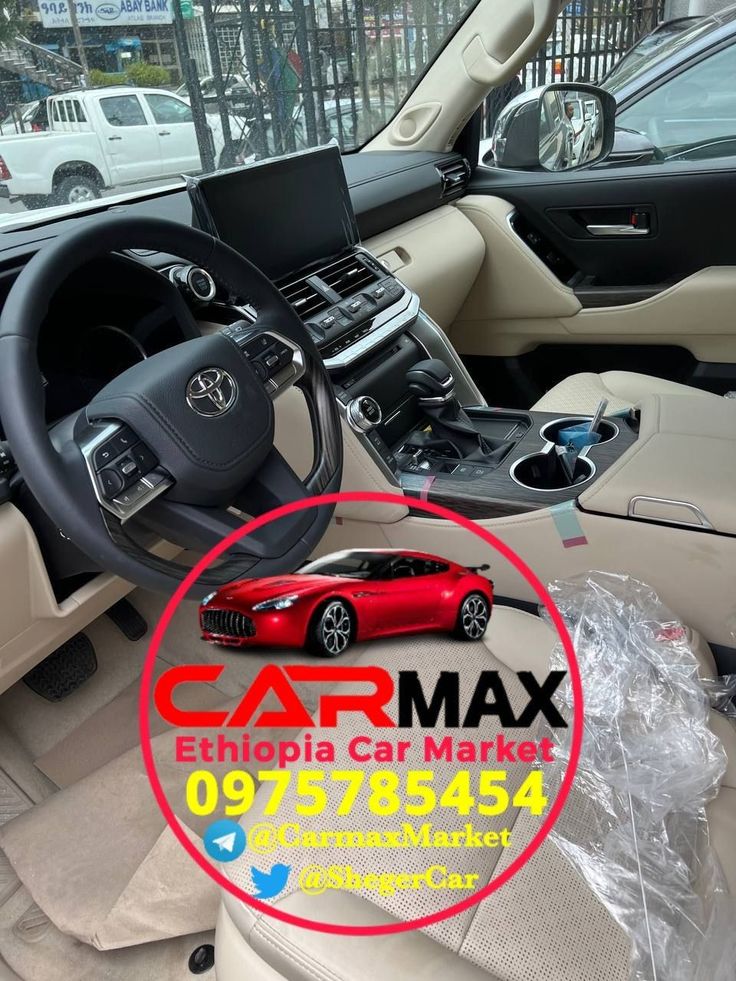What Is A Retail Regional Driver? Navigating the Backbone of Modern Commerce
What Is A Retail Regional Driver? Navigating the Backbone of Modern Commerce cars.truckstrend.com
In the vast and intricate world of logistics, where goods flow continuously from manufacturers to consumers, a specialized role quietly forms the backbone of modern retail: the Retail Regional Driver. Far more than just someone who drives a truck, these professionals are crucial navigators, ensuring that shelves are stocked, products are available, and the intricate supply chain of countless businesses runs smoothly. They are the essential link between a company’s distribution centers and its numerous retail outlets, operating within a defined geographical area to maintain the consistent flow of goods.
Unlike their long-haul counterparts who traverse states and often spend weeks away from home, retail regional drivers typically operate within a few hundred miles of their home base, allowing for more predictable schedules and often, the coveted opportunity to be home most nights or weekends. This unique balance of professional driving and personal life makes the role highly attractive to many, while its critical importance to the retail sector ensures steady demand and a stable career path.
What Is A Retail Regional Driver? Navigating the Backbone of Modern Commerce
This comprehensive guide will delve into every facet of what it means to be a Retail Regional Driver, exploring the core responsibilities, the benefits and challenges of the role, how to embark on this career, and practical advice for success.
The Core Role of a Retail Regional Driver
At its heart, a Retail Regional Driver is responsible for the timely and safe transportation of goods from a company’s main distribution centers (DCs) to its various retail store locations within a specific region. This region might encompass several counties, a large metropolitan area, or even neighboring states, but it is always defined to allow for regular return to the driver’s domicile.
Key Responsibilities and Daily Operations:
- Freight Transportation: The primary duty involves picking up loaded trailers (often "drop-and-hook," where a loaded trailer is exchanged for an empty one) from a DC and delivering them to multiple retail stores along a designated route. The goods can range from general merchandise, apparel, and electronics to perishable foods, requiring specialized handling and temperature control in some cases.
- Vehicle Operation: Retail regional drivers typically operate Class A commercial motor vehicles (CMVs), primarily tractor-trailers. This demands expertise in handling large rigs, navigating diverse road conditions, and often maneuvering in tight spaces at store loading docks or delivery areas.
- Pre- and Post-Trip Inspections: Adhering to Department of Transportation (DOT) regulations, drivers must conduct thorough pre-trip inspections of their vehicle and trailer before commencing a route and post-trip inspections upon completion. This includes checking tires, brakes, lights, fluid levels, and ensuring all safety equipment is in order.
- Load Security: Ensuring the cargo is properly secured within the trailer is paramount to prevent shifting, damage, or accidents during transit.
- Route Optimization and Navigation: While routes are often pre-planned by dispatch, drivers must be adept at following directions, using GPS, and adapting to unforeseen circumstances like traffic detours or road closures.
- Paperwork and Electronic Logging: Maintaining accurate logs of hours of service (HOS) using Electronic Logging Devices (ELDs) is a legal requirement. Drivers are also responsible for managing delivery manifests, bills of lading, and other essential paperwork or digital records.
- Customer Interaction: Although less frequent than a local delivery driver, retail regional drivers often interact with store managers, receiving personnel, and other staff members during deliveries. Professionalism and good communication skills are vital.
- Adherence to Regulations: Strict compliance with all federal, state, and local traffic laws, as well as DOT safety regulations, is non-negotiable.

Key Characteristics & Benefits of the Role
The retail regional driver role offers a compelling proposition for many professional truck drivers, balancing the allure of the open road with the comforts of home.
- Predictable Home Time: This is arguably the biggest draw. Unlike Over-The-Road (OTR) drivers who might be out for weeks, regional drivers often get home daily or multiple times a week, allowing for a significantly better work-life balance. This means more time with family, for hobbies, and personal commitments.
- Consistent Routes: Many regional routes are repetitive, meaning drivers become familiar with the roads, store locations, and common challenges, leading to increased efficiency and reduced stress.
- Steady Employment: The retail sector is a constant, ensuring a continuous need for goods movement. This translates to stable job security and consistent work for retail regional drivers, often with major, reputable companies.
- Competitive Compensation: Regional drivers typically earn a competitive salary, often with opportunities for bonuses based on performance, safety, and mileage. Companies often offer comprehensive benefits packages including health, dental, and vision insurance, 401(k) plans, and paid time off.
- Less Physical Strain (Often): While trucking always involves some physical demands, many retail regional routes involve "drop-and-hook" operations, where the driver simply swaps a loaded trailer for an empty one. This minimizes or eliminates the need for manual loading and unloading by the driver, reducing physical exertion compared to roles that require extensive freight handling.
Becoming a Retail Regional Driver: A How-To Guide
Embarking on a career as a retail regional driver is a structured process that requires specific qualifications and training.
- Obtain a Commercial Driver’s License (CDL): A Class A CDL is the fundamental requirement for operating tractor-trailers. This involves passing a written knowledge test and a comprehensive driving skills test (pre-trip inspection, basic controls, and road test).
- Attend a CDL Training School: While not always mandatory, attending an accredited truck driving school is highly recommended. These programs provide the necessary knowledge and practical skills, preparing you for the CDL exam and the realities of professional driving. They often have job placement assistance.
- Secure Necessary Endorsements (If Applicable): Depending on the type of goods transported, certain endorsements might be required. For retail, a HazMat (H or X, if combined with Tanker) endorsement might be needed for specific products, though it’s less common than for specialized freight. Doubles/Triples (T) endorsement might be useful if the company uses those configurations.
- Maintain a Clean Driving Record: A good driving history is crucial. Employers will review your Motor Vehicle Record (MVR) for accidents, moving violations, and DUIs. A clean record significantly increases your employability.
- Pass a DOT Medical Examination: All commercial drivers must pass a physical examination conducted by a certified medical examiner to ensure they are physically capable of safely operating a CMV. This includes vision, hearing, blood pressure, and overall physical health.
- Gain Experience (Optional but Beneficial): While some companies hire new CDL graduates for regional routes, others prefer candidates with at least 6 months to a year of verifiable driving experience. If you’re a new driver, consider starting with a company that offers paid training or has a new driver program.
- Job Search: Utilize online job boards (Indeed, Monster, CDL jobs specific sites), company career pages (e.g., Walmart, Target, Amazon, other large retailers or their dedicated logistics partners), and professional recruiters specializing in trucking.
Important Considerations & Potential Challenges
While the benefits are significant, the role of a retail regional driver also comes with its unique set of challenges that prospective candidates should be aware of.
- Hours of Service (HOS) Regulations: Strict adherence to federal HOS rules is critical. Drivers must manage their driving time, on-duty time, and rest breaks carefully to avoid violations, which can lead to fines and penalties.
- Traffic Congestion: Regional routes often involve driving through urban and suburban areas, which means dealing with heavy traffic, rush hour delays, and navigating busy streets.
- Tight Delivery Windows: Retail stores operate on precise schedules, and drivers must meet strict delivery deadlines. Delays can impact store operations and customer satisfaction.
- Navigating Store Properties: Accessing some retail store loading docks can be challenging due to limited space, tight turns, or obstacles in parking lots.
- Weather Conditions: Drivers must be prepared to operate safely in all weather conditions, from heavy rain and snow to extreme heat.
- Physical Demands: While often less strenuous than roles requiring extensive manual loading, drivers still need to be able to climb in and out of the cab, secure loads, and potentially assist with moving pallets if required by the specific employer.
- Irregular Schedules (Sometimes): While generally more predictable, some routes may involve early morning starts, late-night finishes, or weekend shifts, depending on the retail operation’s needs.
Tips for Success as a Retail Regional Driver
To excel in this role and build a lasting career, consider the following practical advice:
- Master Your Routes: Familiarize yourself thoroughly with your assigned routes, including potential choke points, alternative roads, and specific store delivery protocols.
- Prioritize Time Management: Punctuality is key. Plan your breaks, fuel stops, and inspections efficiently to ensure on-time deliveries.
- Cultivate Communication Skills: Maintain open and professional communication with dispatch, store personnel, and your fleet manager. Report issues promptly.
- Be Diligent with Pre-Trip Inspections: A thorough inspection can prevent breakdowns and ensure safety, saving you time and hassle down the road.
- Stay Adaptable: Be prepared for unexpected changes in weather, traffic, or route assignments. Flexibility is a valuable trait.
- Maintain Professionalism: You are the face of the company at each retail location. A positive attitude and professional demeanor leave a lasting impression.
- Prioritize Health and Wellness: Long hours of sitting, irregular sleep, and access to unhealthy food options can take a toll. Make conscious efforts to eat well, stay hydrated, and get adequate rest.
Practical Advice and Actionable Insights
For those considering this career path, here are some actionable insights:
- Research Specific Companies: Different retail companies (or their logistics partners) offer varying benefits, equipment quality, and work cultures. Look into reviews from current and former drivers to find a good fit.
- Ask About Equipment: Inquire about the age of the fleet, maintenance schedules, and the type of technology used (e.g., automated manuals vs. stick shifts, advanced safety features).
- Understand Compensation Structure: Clarify how you will be paid (per mile, hourly, per load, or a combination) and what deductions or bonuses apply.
- Network: Connect with other regional drivers online or in person. Their experiences can offer invaluable insights into specific companies or the industry at large.
- Invest in Good Gear: Quality boots, weather-appropriate clothing, and perhaps a comfortable seat cushion can make a big difference in your daily comfort.
- Stay Updated on Regulations: DOT regulations can change. Keep yourself informed to ensure continuous compliance.
Key Information Summary: Retail Regional Driver
| Aspect | Description/Value |
|---|---|
| Role Definition | Transports goods from distribution centers to retail stores within a defined region. |
| Typical Vehicle | Class A Tractor-Trailer (e.g., 18-wheeler). |
| CDL Requirement | Class A CDL (Commercial Driver’s License) is mandatory. |
| Typical Pay Range | Varies widely by company, region, and experience; generally $60,000 – $90,000+ per year. |
| Home Time | Often daily or multiple times per week, typically home weekends. |
| Key Skill | Time management, navigation, communication, adherence to regulations. |
| Common Challenges | Traffic, tight delivery windows, HOS compliance, navigating store properties. |
| Major Benefits | Predictable home time, steady work, competitive pay, often less physical loading. |
| Experience Needed | Some companies hire new CDL grads; others prefer 6 months to 1+ year. |
Frequently Asked Questions (FAQ)
Q1: Is a CDL required to be a Retail Regional Driver?
A1: Yes, a Class A Commercial Driver’s License (CDL) is essential, as the role typically involves operating tractor-trailers.
Q2: Do I need prior trucking experience to become a Retail Regional Driver?
A2: It depends on the company. While some major retailers or their logistics partners have training programs for new CDL graduates, many prefer candidates with at least 6 months to a year of verifiable commercial driving experience.
Q3: What’s the typical work schedule for a Retail Regional Driver?
A3: Schedules vary, but a major draw is the increased home time. Many drivers work 5-day weeks (e.g., Monday-Friday), often starting early in the morning and returning home in the evening. Weekend work is less common than in OTR, but can occur depending on the company and route.
Q4: How much do Retail Regional Drivers make?
A4: Salaries vary based on location, company, experience, and the specific freight. Generally, retail regional drivers can expect to earn between $60,000 and $90,000+ per year, often with benefits like health insurance, 401(k), and paid time off.
Q5: Is being a Retail Regional Driver physically demanding?
A5: It’s generally less physically demanding than roles requiring extensive manual loading and unloading. Many routes are "drop-and-hook." However, drivers still need to be able to climb in and out of the truck, perform pre-trip inspections, and occasionally assist with moving pallets. It requires stamina and alertness.
Q6: What’s the main difference between a Retail Regional Driver and an Over-The-Road (OTR) Driver?
A6: The primary difference is home time and route predictability. OTR drivers often travel across multiple states, staying out for weeks at a time. Regional drivers operate within a more confined geographical area, allowing them to be home daily or multiple times a week, and often run more consistent routes.
Conclusion
The role of a Retail Regional Driver is a vital cog in the complex machinery of modern commerce. These dedicated professionals ensure that goods move efficiently from distribution centers to store shelves, playing an indispensable part in meeting consumer demand and supporting the economy. For individuals seeking a stable, well-compensated career that offers a better balance between the open road and personal life than traditional long-haul trucking, becoming a Retail Regional Driver presents a highly attractive and rewarding opportunity. It’s a career that demands skill, responsibility, and adaptability, but in return, offers consistent work, competitive pay, and the significant benefit of being home more often.





